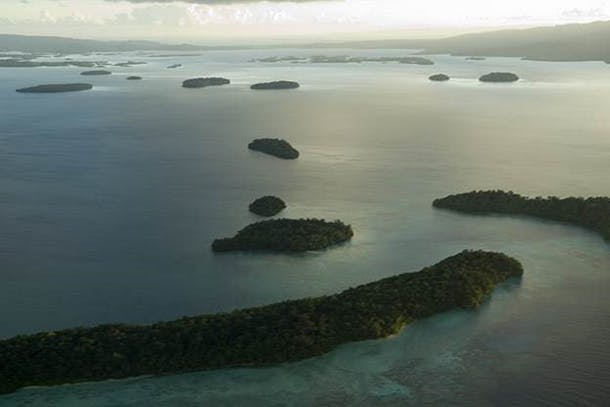
The United Nations Environment Programme (UNEP) seized the occasion of the second UN Environment Assembly from May 23-27 in Nairobi to launch six regional environmental outlooks – detailed reports that assessed the state of the environment in Africa, Asia-Pacific, Pan Europe (EU, Southeast Europe, and Central Asia), North America (U.S. and Canada), Latin America and the Caribbean, and West Asia (nominally the Middle East and North Africa).
For the first time, regional assessments were developed to establish a foundation for the Global Environmental Outlook, UNEP’s flagship report that is published every five to six years. More than 1,200 scientists from all the regions and 160 governments joined in developing the assessments which were reviewed by scientists and policy experts before release.
Here are key threats from the reports.
Global
- Climate change impacts are accelerating in every region and intensifying environmental degradation.
- Air pollution is a major threat in every region; deaths from outdoor and indoor air pollution are approaching 8 million annually. Women, children, and the elderly are most seriously affected.
- Rapid melting in the Arctic – and Siberia – is a climate change impact that poses risks not only for indigenous populations, but for planetary climatic stability and regional security. Urbanization and overpopulation, major drivers of environmental damage, are of particular concern in the developing world.
Asia-Pacific
- Urban air pollution is rapidly increasing in Asia-Pacific. Industry and transport are major sources of pollution, as well as deforestation and forest fires.
- Municipal solid waste poses risks for human health as well as water quality in urban areas.
- Significant increase in extreme weather in this region underscores the need for resilience initiatives and better disaster management.
- Deforestation continues apace in Indonesia, Vietnam, Cambodia, and Laos, threatening biodiversity, adding to greenhouse gas emissions, and undermining ecosystems.
Africa
- Africa’s rapidly expanding population and political instability are major drivers of environmental degradation.
- Illegal trade in wildlife poses severe economic and security risks for Africa; annual economic losses from wildlife trafficking alone are estimated at
$260 billion. - Water scarcity poses great risks for food production, and water quality undermines human health.
Latin America and the Caribbean
- Latin America’s Andean glaciers are shrinking, leading to reduce water availability for both agriculture and urban areas.
- Urban air pollution is an increasing health risk in major cities.
North America
- While water quality is good in North America, investments to maintain water quality are insufficient.
- Urbanization is the biggest threat to protected areas in North America, threatening biodiversity habitat and ecosystem services.
- Persistent drought in areas of the U.S. and Canada have damaged forests, increased the incidence of wildfires, reduced water quality and availability, and eroded soils. These climate change impacts will not be easily reversed.
Pan-Europe
- More than 95% of the urban population in the Pan-European region live in cities where air pollutants exceed World Health Organization guidelines.
- Extreme weather in Europe’s river basins has jeopardized both urban and rural populations. Flood management is an urgent challenge throughout the region.
- Overuse of chemical pesticides and fertilizers has poisoned soils in areas of the former Soviet Union and contaminated water sources threatening biodiversity and human populations.
West Asia
- War and political instability, especially in West Asia, exacerbates land degradation, increases exposure to heavy metals and other toxins, compromises water quality, and eliminates economic activity. Consequent refugee flows pressure neighboring states.
- Water scarcity poses threats to both urban and rural populations.
Key solutions to challenges include:
- Strive to end conflicts and stabilize population movements.
- Strengthen governance of natural resources with enhanced participation of local communities.
- Implement the Paris agreement and strengthen Nationally Determined Contributions before 2020.
- Address air pollution and reduce greenhouse emissions that contribute to climate change.
- Reduce fossil fuel subsidies in every region (a G7 commitment), which can accelerate deployment of renewable energy technologies, improving human health,
access to modern energy services, and potentially reducing the long term threat of climate change. - Incentivize behavioral change through tax policy and public awareness campaigns.
- Enact policies that reduce consumption of natural resources and identify solutions that promote conservation, reuse, and recycling. (New food waste reduction strategies in the US and the EU are examples of this.)
- Implement new water conservation and harvesting strategies that respond to the changes in glacier/mountain regions that will protect fragile ecosystems and maintain hydrological balances.
- Commit to zero deforestation (as proposed in the Sustainable Development Goals) as soon as possible particularly critical in Southeast Asia, Latin America, and the Congo Basin in Africa.
- Adopt new management practices for handling and reusing municipal solid waste, which poses a threat to water quality and human health in many urban areas
- Invest in urban and coastal flood control systems to improve resilience to climate change.
- Intensify and expand local, national, regional, and global cooperation on environmental information, trends, response measures, and best practices. And ensure public participation through awareness raising, media outreach, and education.
This expansion of analytic work to the regions, combined with UNEP’s effort to create an interactive data platform, UNEPLive, to provide national, regional, and global information from a wealth of different sources promises to fill a major gap for environmental policymakers.
The new database and its growing reporting and analytic capacity is designed to provide policy makers with a “live” look at what certain social and environmental data trends suggest and to aid them in planning for implementation of the Sustainable Development Goals. This data infrastructure could help UNEP become the central repository for environmental data and analysis in the UN system as implementation of the Sustainable Development Goals proceeds, eventually reinforcing the indicator development process as well.
[Photo: UN Photo/Eskinder Debebe]



 View All Blog Posts
View All Blog Posts